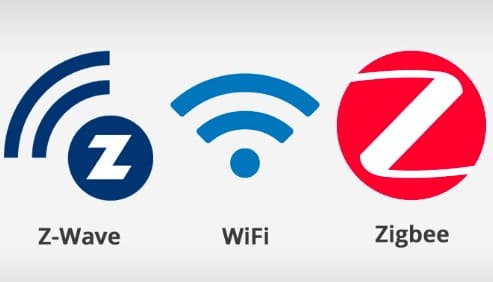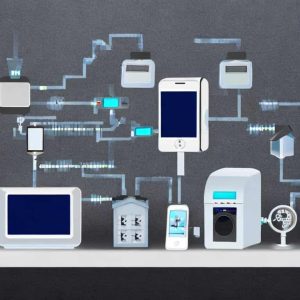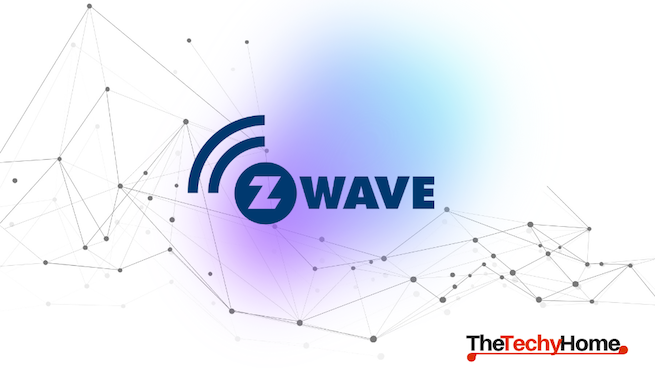 Is Z-Wave the right choice for a smart home? Let’s Find Out Now!
Is Z-Wave the right choice for a smart home? Let’s Find Out Now!
What is Z-Wave Technology and How Does It Work?
Z-Wave is a wireless communication protocol used in home automation systems. It is designed to provide an easy-to-use, low-cost and reliable solution for controlling devices wirelessly within the home.
Z-Wave works by sending data packets over radio frequencies, allowing users to control appliances, lights and other electronics from a central hub or remote control. By linking these devices together, users can create a home automation network that simplifies the tasks of everyday life.
With the help of Z-Wave technology, users can easily program their devices to turn off lights, adjust thermostat settings or even dim the lights at certain times of day. This makes it much easier to manage energy consumption and security in the home.
How Can Z-Wave Technology Improve Your Home Automation System?
It offers an easy-to-use, low-cost, and reliable solution for controlling devices wirelessly within the home. Additionally, by linking devices together, users can create a home automation network that simplifies the tasks of everyday life as it allows users to:
- Control lights and schedule it
- Adjust thermostats and automatize it
- Lock doors and windows based on a schedule, cues or using an app.
- Check security cameras
and more, all from the comfort of their own home (or anywhere with an app).
This makes it a great choice for users who want to control their homes with minimal effort or who are looking for a more secure system.
Some of the benefits of using Z-Wave technology include:
- Simplicity – Z-Wave is designed to be simple to use, so even inexperienced users can control their appliances and devices with ease.
- Low Cost – Compared to other home automation protocols, Z-Wave is relatively inexpensive and easy to install.
- Reliability – Due to its wireless nature, Z-Wave is always reliable and can keep up with high demand loads.
How is Z-Wave Technology Different from Other Smart Home Technologies?
TL;DR
Z-Wave is a low-power wireless network protocol used in home automation systems. It is different from other smart home technologies, such as Wi-Fi and Bluetooth, in that it uses radio frequencies to send data packets. This makes Z-Wave more reliable and immune to interference than other wireless protocols. Additionally, Z-Wave devices can be linked together to create a larger network that can be controlled from a central hub or remote control. This makes it a great choice for users who want to create a complex system or who have multiple devices in their home.
Z-Wave compared to Wi-Fi

Z-Wave is a wireless communication protocol designed specifically for home automation systems, whereas Wi-Fi is an internet connection protocol. Z-Wave has the ability to control devices wirelessly within the home, while Wi-Fi is mainly designed to connect devices to the internet. Also, Z-Wave can extend up to 100 feet (100 meters or 328 feet in open air) while Wi-Fi can only reach about 30 feet.
Z-Wave compared to Bluetooth
Z-Wave is a wireless communication protocol used in home automation systems, while Bluetooth is a short-range wireless connection used to link devices. Z-Wave is designed to be more reliable and energy efficient than Bluetooth, making it a better choice for home automation. Additionally, Bluetooth has a limited range, while Z-Wave can extend up to 100 feet as mentioned earlier.
Z-Wave compared to Zigbee
Z-Wave is a wireless communication protocol used in home automation systems, while Zigbee is an open wireless communication protocol designed for low-power devices. Z-Wave is designed to be more reliable and energy efficient than Zigbee, making it a better choice for home automation. Additionally, Zigbee has a limited range (35 feet), while Z-Wave has a broader one.
What Are the Latest Developments in Z-Wave Technology?
There are several new developments in Z-Wave technology that are making it a more popular choice for home automation systems. One of the most recent developments is the launch of the Z-Wave Alliance. This alliance brings together various companies who develop and manufacture Z-Wave products, to help promote and standardize the protocol.
Cost of Implementing Z-Wave Technology in a Home Automation System
The cost of implementing Z-Wave technology in a home automation system depends on the size and scope of the project. Generally, a basic Z-Wave system will cost around $400 for the hardware components, such as a hub, sensors, and controllers. Additional components, such as lighting control, motorized window shades, and audio/video control, will add to the cost. Installation and programming fees can range from $100 to $300 depending on the complexity of the system.
What Are the Pros and Cons of Z-Wave Technology?

Overall, Z-Wave technology is a reliable and secure protocol that offers users the ability to control their homes without having to worry about security issues. Additionally, Z-Wave is easy to install and use, making it a good choice for users who want to control their homes without having to learn complicated programming languages. However, there are some security implications that we discussed earlier and also the following points:
Pros:
– Z-Wave technology is secure, reliable, and easy to use.
– It is compatible with a wide range of devices, including smart home products and home automation systems.
– It is energy efficient, consuming very little power.
– It is relatively low-cost compared to other home automation systems.
Cons:
– It requires specific Z-Wave enabled devices and is not compatible with all products.
– Can sometimes be difficult to troubleshoot due to its complexity.
– It requires a hub or controller to be effective.
What Are the Different Types of Z-Wave Devices?
The different types of Z-Wave devices include:
– Hubs and Controllers – The center of the Z-Wave system that connects to other devices and allows users to control them.
– Sensors – Devices that detect changes in the environment such as motion, temperature, and light.
– Lighting Control – Allows users to control lights, including dimmers and switches.
– Motorized Window Shades – Used to automatically open and close blinds or shades.
– Audio/Video Control – Allows users to control and stream audio/video from their devices.
– Appliance Control – Allows users to control and monitor appliances such as refrigerators and washing machines.
-Smart Thermostats – Enables users to control the temperature within their home remotely and with greater accuracy.
Exploring the Security Implications of Z-Wave Technology
Pros
One of the main benefits of using Z-Wave technology is its reliability. Because Z-Wave uses wireless communication, it is always reliable and can keep up with high demand loads. This makes it a great choice for users who want to control their homes without having to worry about their security. Additionally, Z-Wave has a secure protocol that makes it difficult for unauthorized people to access your devices and appliances.
Cons
Although Z-Wave is a secure protocol, there are still some security implications to consider. For one, because Z-Wave is a wireless communication protocol, it is susceptible to signal interference. This can lead to devices being unable to connect to the network or being unable to communicate with each other.
Additionally, because Z-Wave uses a mesh network, if one device is compromised, the entire network can be at risk.
Finally, Z-Wave devices can be hacked, which a shared disadvantage across almost all technologies. This risk could lead to unauthorized access to your home automation system.
So! is z–wave a good option for smart home?
The answer is yes! As discussed in this article, Z–Wave is a good option for smart home automation. Z–Wave is a secure and reliable wireless communication protocol that can be used to control a variety of smart home products, offering an energy efficient and cost–effective solution.
How far does Z–Wave work?
Z-Wave is a wireless communication protocol used in smart home devices. It has a range of 100 meters or 328 feet in open air, but due to the presence of building materials, its range is reduced and it is recommended to have a Z-Wave device roughly every 30 feet for maximum efficiency. The Z-Wave signal can also hop roughly 600 feet, and Z-Wave networks can be linked together for even larger deployments. This allows for multiple devices to be connected in a single network, allowing for more complicated home automation tasks. Additionally, Z-Wave networks are resilient to interference, providing a secure connection with low latency.
The range of Z-Wave can be extended by using signal repeaters, which act as an intermediary between two devices and can boost the signal. This allows for more devices to be connected in a network, further increasing the range of the system. Additionally, mesh networking can be used to create larger networks, with devices relaying each other’s signals to create a stronger, more reliable connection. This allows for even larger deployments of Z-Wave devices, creating a reliable and efficient home automation system.

